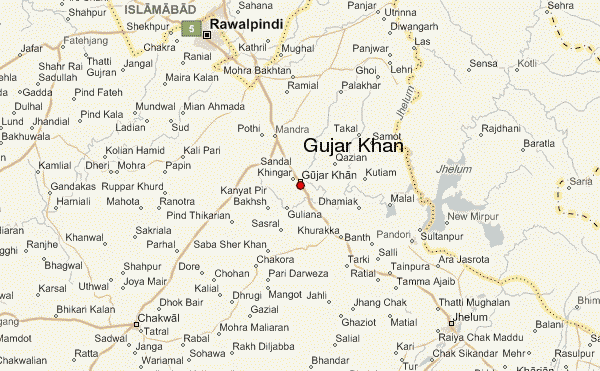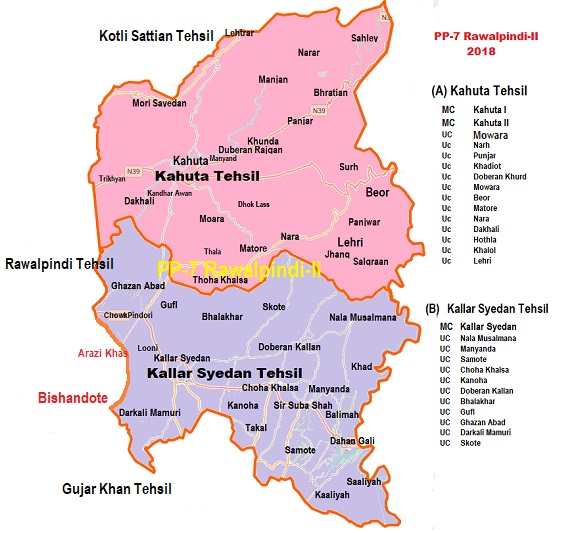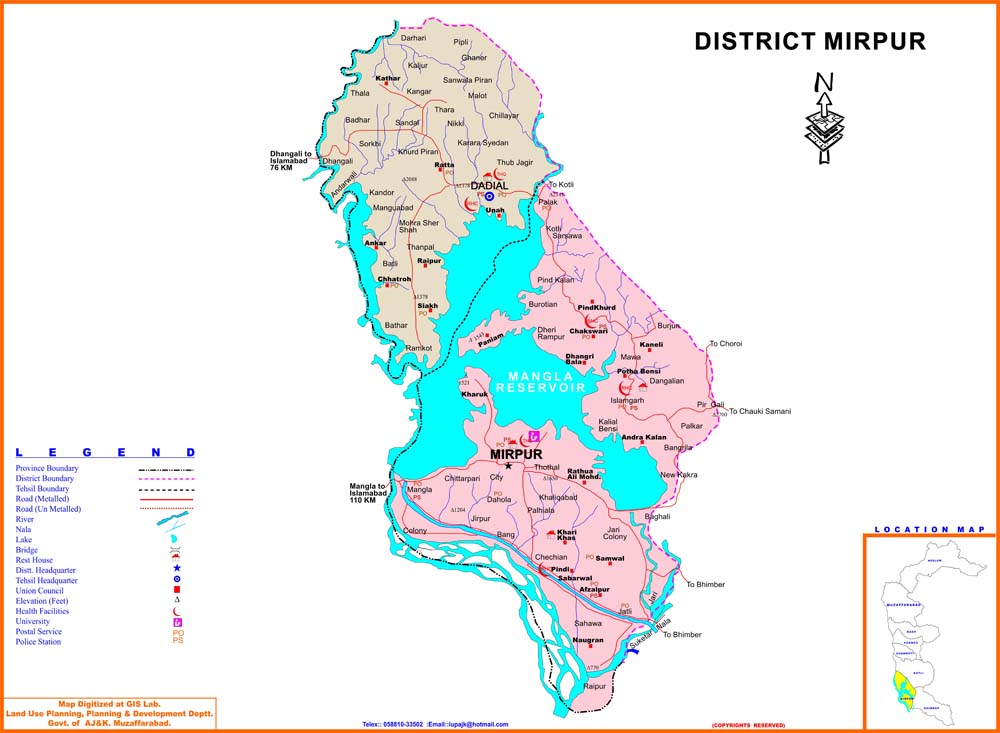In this post, I will look at are the Nathyals, sometimes spelt Nathial tribe found mainly in Gujrat and Jhelum districts. Like other tribes of the Pothohar region, the Nathyal have a good many traditions as to their origin, often these being quite contradictory. For this article, I rely on both British sources and tribal traditions.
British Sources
British sources are very scarce on the Nathial. H. A Rose, the early 20th Century British ethnologist writes the following about them:
Bhakral; a tribe of Musalman Jats found in Gujrat. It claims descent from Ghalla, a Janjua Rajput who had three sons, Bhakari its eponym, Natha (founder of the Nathial) and Kunjah (founder of the Kanjial).
Rose connects the tribe with the Janjua Rajputs, as well as creating a common origin with the Bhakral and Kanjial. However neither of these two tribes claim any connection with the Janjua.
Tribal Traditions
According to tribal traditions, there ancestor was a Natha Khan, a Janjua Rajput, who is said to have taken a Jat wife. His was therefore made to leave the tribe, and descendants thus became Jats. These origin stories are common among many of the Jats of the Jhelum region and may suggest some connection with the Janjuas. So, who exactly are the Janjua. According to their tribal traditions, groups of Rathore Rajputs, emigrating from Jodhpur, occupied the uplands of the Salt Range, around a thousand years ago. The leader of this movement according to the common account, was Raja Mal. He appears in every family tree.
Many prominent Muslim tribes trace their lineage back to the Janjua through the five princes of the House of Raja Mal Khan Janjua. Indeed, the Nathial are not the only Jat tribe of Janjua descent, so do the Ghuman, Ganjial, Bhakral, Banth, and Basoya Jats. The five princes were Raja Bhir Khan, Raja Jodh Khan, Raja Kala Khan, Raja Tanoli Khan and Raja Khakha Khan. Jodh and Bhir were born of a Gakhar Rani while Kala, Khakha and Tanoli were born of another Rajput Rani.
Natha Khan came from the line of Raja Bhir. The lineage of Raja Bhir is described by Lepel H. Griffin, in his famous book Chiefs and Families of note in the Punjab (Lahore, 1910, ii, p254) as follows:
On the death of their father they determined to divide the country called, from Raja Mal, the Maloki Dhan between them. Jodh took the Salt Range near about the Makrach, and captured the town of Makshala from a colony of Brahmans (mohyals)…He changed its name to Makhiala and built there a fort and two tanks for rain water….. Wir Khan (also spelt Bhir), took the possession of Khura (also spelt Khewra) near modern Pind Dadan Khan. He had one son, Raja Ahmad Khan, from whom have descended the families of Malot, Badshapur, and Dalwal
The Panjab Chiefs. Vol. 1. Updated by Charles Francis Massy (New revised ed.). Lahore: Civil and Military Gazette Press. 1890.
Raja Bhir’s son, Raja Acharpal became a famous chief after his father’s death. The above mentioned Ahmed Khan was in fact Acharpal, who later changed his name after converting to Islam. Over time sections of the Janjua took to agriculture, and according to tribal traditions became Jats.
Baba Bajwa, relying mainly on Mirasi records gives a completely different genealogy.
Wacha (ancestor of the Surayvanshi tribes)
↓
Bhoj Raj (20th in descent from Wacha, and ancestor of most the Punjab Suryavanshi)
↓
Mulraj (10th in descent from Bhoj Raj, ancestor of the several tribes such as Dhudhi, Lak and Waseer)
↓
Chaluk Raj
↓
Sotrakh Raj
↓
Saroya
↓
Naich
↓
Warcha
Jograh (ancestor of the Kang, Natt and Wahla Jats)
↓
Natt (ancestor of the Natt tribe of Jats)
↓
Nathla
↓
Natha (ancestor of the Nathyal tribe)
This genealogy connects the Nathial with the Natt tribe of Jats. Jograh also appears in the genealogy of the Kang and Wahla Jats. According another tradition among the Natt, Jograh was sixth in descent from the god Ram, who was the ruler of Ayodhya. Jograh fell out with his brothers, and left Ayodhia, and settled in Sialkot, where he was welcomed by semi-mythical Raja Salvahan. According to other traditions, they came from Ghazni in Afghanistan. Claims to an origin from Afghanistan is fairly widespread among several Jat tribes, but unfortunately, they have never been investigated properly. Therefore, as things stands, this simply remains that, a claim. However, the claim to Janjua descent is far more common among the Nathial.
Distribution
The tribe is mainly located in Bhimber district of Azad Kashmir, and Attock, Rawalpindi, Jhelum and Chakwal districts of Pothohar. They are also found in the Jammu. The Nathyal in Jammu are predominantly Hindu, while in Pakistan are predominantly Muslim. After partition of the sub-continent in 1947, many of the Muslim Nathyals from the Jammu region migrated to Pakistan and settled mainly in Gujrat and Faisalabad districts. And the Hindu Nathyals from Bhimber regions migrated to India, and many of these are settled in Jammu, and some of them are also found in Delhi.
There is a village by the name of Dhoke Nathyal, which is located in Attock district. It is known as Nathyal Sharif, because of the presence of one of the Naqshbandi khankahs. Nathial in Pind Dadan Khan Tehsil of Jhelum District is another important Nathial settlement.



